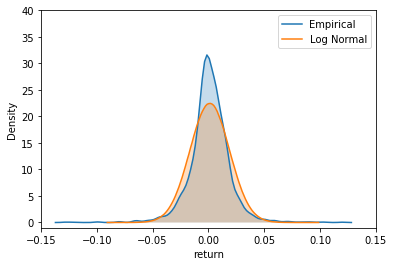 Python is a versatile and powerful programming language widely used in various fields, from web development to scientific research. One of its strengths lies in its object-oriented programming (OOP) capabilities, which allow developers to create classes and functions within those classes. This article will explore the concept of a Python function in a class and how to implement the Black Scholes Python model for option pricing.
Python is a versatile and powerful programming language widely used in various fields, from web development to scientific research. One of its strengths lies in its object-oriented programming (OOP) capabilities, which allow developers to create classes and functions within those classes. This article will explore the concept of a Python function in a class and how to implement the Black Scholes Python model for option pricing.
What is a Python Function in Class?
A Python function in class, also known as a method, is a function that is defined within the context of a class. These methods are designed to operate on the data contained within the class and can perform various operations related to that class. Understanding how to effectively use methods within classes is crucial for efficient and organized code.
Defining a Python Function in Class
To define a Python function in a class, you first need to define the class itself. Once the class is defined, you can create methods within the class. Here’s a simple example:
python
Copy code
class Calculator:
def add(self, a, b):
return a + b
def subtract(self, a, b):
return a – b
In this example, the Calculator class contains two methods: add and subtract. These methods take two parameters, a and b, and return their sum and difference, respectively.
Calling a Python Function in Class
To use the methods defined within a class, you need to create an instance of the class and then call the methods on that instance. Here’s how you can do it:
python
Copy code
calc = Calculator()
result_add = calc.add(5, 3)
result_subtract = calc.subtract(5, 3)
print(result_add) # Output: 8print(result_subtract) # Output: 2
Advantages of Using Python Functions in Classes
Using functions within classes offers several advantages, including:
- Encapsulation:Grouping related functions and data together within a class.
- Reusability:Methods can be reused across different parts of a program.
- Maintainability: Code is easier to maintain and understand when organized into classes and methods.
The Black Scholes Model in Python
The Black Scholes Python model is a mathematical model used for pricing European options. It is a crucial concept in financial engineering and quantitative finance. Implementing the Black Scholes model in Python allows for efficient option pricing calculations.
Understanding the Black Scholes Formula
The Black Scholes formula calculates the theoretical price of an option based on several parameters, including the current stock price, strike price, time to expiration, risk-free interest rate, and volatility. The formula for a European call option is:
C=S0Φ(d1)−Xe−rtΦ(d2)C = S_0 \Phi(d_1) – X e^{-rt} \Phi(d_2)C=S0Φ(d1)−Xe−rtΦ(d2)
Where:
- Φ\PhiΦ is the cumulative distribution function of the standard normal distribution.
- d1=ln(S0/X)+(r+σ2/2)tσtd_1 = \frac{\ln(S_0/X) + (r + \sigma^2 / 2)t}{\sigma \sqrt{t}}d1=σtln(S0/X)+(r+σ2/2)t
- d2=d1−σtd_2 = d_1 – \sigma \sqrt{t}d2=d1−σt
Implementing the Black Scholes Model in Python
To implement the Black Scholes model in Python, you can define a class that contains a method for calculating the option price. Here’s an example:
python
Copy code
import mathfrom scipy.stats import norm
class BlackScholes:
def __init__(self, S, X, T, r, sigma):
self.S = S
self.X = X
self.T = T
self.r = r
self.sigma = sigma
def call_option_price(self):
d1 = (math.log(self.S / self.X) + (self.r + 0.5 * self.sigma ** 2) * self.T) / (self.sigma * math.sqrt(self.T))
d2 = d1 – self.sigma * math.sqrt(self.T)
call_price = (self.S * norm.cdf(d1, 0.0, 1.0) – self.X * math.exp(-self.r * self.T) * norm.cdf(d2, 0.0, 1.0))
return call_price
Using the Black Scholes Class
Once the BlackScholes class is defined, you can create an instance of the class and use it to calculate the call option price:
python
Copy code
bs = BlackScholes(S=100, X=100, T=1, r=0.05, sigma=0.2)
call_price = bs.call_option_price()print(call_price) # Output: Theoretical call option price
Conclusion
Understanding and utilizing a Python function in a class is essential for writing organized and efficient code. Additionally, implementing financial models such as the Black Scholes Python model demonstrates the power and versatility of Python in various applications. By mastering these concepts, developers can create robust and scalable programs. For more advanced Python tutorials and financial models, visit codearmo.com.
